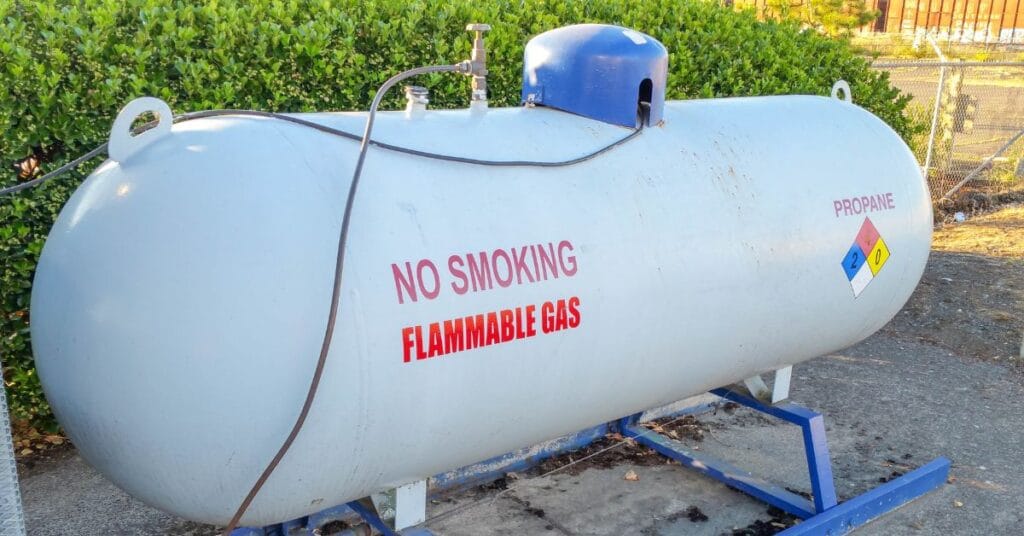For many households and businesses, propane serves as a reliable and efficient fuel source. Whether you’re using it for heating, cooking, or even as fuel for certain vehicles, it’s essential to know how much propane you have left in your tank to avoid unexpected outages. One simple and effective way to keep track is by knowing how to read propane tank gauge. But how exactly do you do that? Let’s dive in!

Understanding the Importance of Propane Tank Gauges
Before we jump into the reading process, it’s important to understand the significance of regularly checking your propane tank gauge. Keeping an eye on your gauge will:
- Prevent unexpected shortages: By regularly monitoring, you can ensure that you never run out of propane, especially during crucial times, like winter months or during a BBQ party.
- Help with budgeting: Knowing your consumption rate can assist in budgeting for refills, ensuring you’re not caught off guard by sudden expenses.
The Anatomy of a Propane Tank Gauge
A propane tank gauge, typically found on the top of your tank, is a circular object with numbers ranging from 5 to 95. These numbers represent the percentage of gas in the tank. So, if your gauge points to 40, your tank is 40% full.
How to Read Propane Tank Gauge: Step-by-Step
- Locate the Gauge: For most propane tanks, especially the ones used for grilling or home heating, the gauge will be located under the dome, with a protective cap on top of the tank. Lift or open the dome to get a clear view of the gauge.
- Check the Percentage: Look at where the needle on the gauge is pointing. This number will indicate the percentage of propane left in the tank. Remember, it’s never 100% filled to allow for propane expansion.
- Consider the Tank’s Total Capacity: To determine the actual amount of propane in your tank, you’ll need to consider its total capacity. For instance, if you have a 500-gallon tank and the gauge reads 40%, you have 200 gallons left (0.40 x 500 = 200).
Factors that Affect Propane Levels
It’s essential to note that several factors can influence the rate at which you consume propane:
- Usage: Obviously, the more appliances or systems you have that use propane, the faster you’ll run out.
- Temperature: Cold weather can increase the consumption of propane, especially if you use it for heating.
- Tank Size: Larger tanks hold more propane, so it may seem like you’re using it up slowly, whereas smaller tanks will deplete faster with the same usage.
When Should You Refill Your Propane Tank?
It’s generally recommended to contact your propane provider when your tank reaches the 20% mark. This provides ample buffer, ensuring you don’t run out before the next delivery. If you’re using propane for essential services, like heating, it’s even more crucial to stay ahead.
Check out these 10 Best Propane Grills Under $500!
How Temperature Affects Propane Readings
The reading on your propane gauge can be affected by the temperature outside. Propane is affected by temperature changes, expanding in heat and contracting in cold. A reading taken on a hot day might show more propane than what’s there, while a cold day might under-represent your actual levels. So, always take readings with a pinch of salt and use them as general guidelines.
Automating the Process with Digital Gauges
For those who prefer a more tech-savvy approach, there are digital propane tank monitors available. These devices can send alerts to your phone when levels are low, making the monitoring process a breeze.
FAQs
Can weather conditions affect my propane gauge readings?
Yes, temperature can impact propane levels. Propane expands in warmer temperatures and contracts in cooler ones. This expansion and contraction can cause fluctuations in gauge readings, so it’s always best to take readings as a general guide rather than an exact measurement.
What does the propane gauge number actually represent?
The number on your propane tank gauge signifies the percentage of propane remaining in the tank. For instance, if it reads 30, your tank is 30% full.
Why is my propane tank never filled to 100%?
Propane tanks are never filled to 100% to allow for the natural expansion and contraction of propane due to temperature fluctuations. A space buffer ensures safety and prevents over-pressurization.
How often should I check my propane tank gauge?
Ideally, check your propane tank gauge once a month, especially if you rely on propane for essential services. However, during peak usage seasons, like winter, consider checking it more frequently.
What should I do if my propane tank gauge is broken or gives inconsistent readings?
If you suspect your gauge is malfunctioning, contact your propane supplier or a professional to inspect and replace it if necessary. A malfunctioning gauge can give inaccurate readings, potentially leading to unexpected outages.
Can I replace my manual propane gauge with a digital one?
Absolutely! Digital propane gauges are available and can be retrofitted to most propane tanks. They offer features like remote monitoring and low-level alerts, making the management of your propane supply even easier.
Conclusion
Properly reading and understanding your propane tank gauge is crucial for both the efficient use of energy and your peace of mind. With regular checks, you can ensure that you’re never left in the cold or without the means to cook your favorite meal. Whether you’re a seasoned propane user or new to the game, we hope this guide has shed light on the ins and outs of reading your propane tank gauge.
By giving this small aspect of your home or business the attention it deserves, you can enjoy a seamless propane experience, always staying one step ahead of your fuel needs.